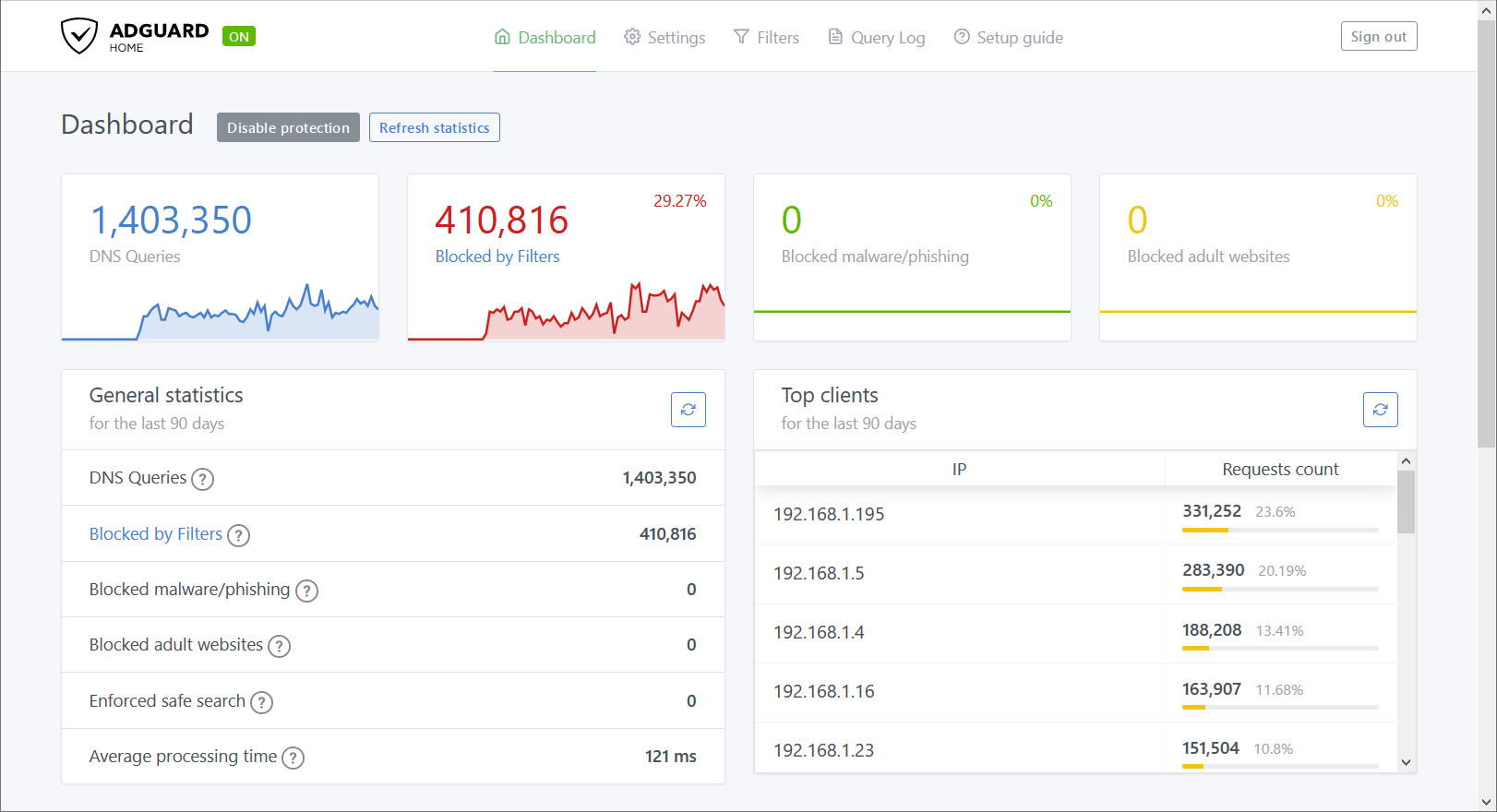 Adguard Home versie 0.107.0 is uitgekomen. Met deze software kan er thuis een dns-server worden opgezet om zo onder meer advertenties en malware te blokkeren op het gehele netwerk. Het is daarmee dus vergelijkbaar met Pi-hole. Adguard Home werkt op een machine met Windows, macOS, Linux of FreeBSD, is ook in staat om tegen phishing te beschermen en heeft parental control. Op ons eigen forum kan over het programma worden gediscussieerd. De complete changelog voor deze uitgave kan op deze pagina worden gevonden. Dit zijn in het kort de belangrijkste verbeteringen die in versie 0.107.0 zijn aangebracht:
Adguard Home versie 0.107.0 is uitgekomen. Met deze software kan er thuis een dns-server worden opgezet om zo onder meer advertenties en malware te blokkeren op het gehele netwerk. Het is daarmee dus vergelijkbaar met Pi-hole. Adguard Home werkt op een machine met Windows, macOS, Linux of FreeBSD, is ook in staat om tegen phishing te beschermen en heeft parental control. Op ons eigen forum kan over het programma worden gediscussieerd. De complete changelog voor deze uitgave kan op deze pagina worden gevonden. Dit zijn in het kort de belangrijkste verbeteringen die in versie 0.107.0 zijn aangebracht:
Native Apple Silicon supportThere's no shortage of killer features in this changelog, but this one takes the cake as the biggest of them all, without any doubt. You won't have to resort to Rosetta or any such solutions anymore if you want to configure AdGuard Home on a Mac with a Silicon chip.
RFC 9000 support In DNS-over-QUICIt's not quite over nine thousand, but it'll do. The IETF has formalized QUIC this year with RFC 9000, and DNS-over-QUIC protocol finally supports it. If you haven't tried DoQ yet, consider this a sign.
$dnsrewriterules and other DNS rewrites will now be applied even when protection is disabled (#1558)Another popular demand. This change only makes sense, as DNS rewrites often carry a different purpose than simply blocking ads or trackers. You still can disable them by opening the admin panel, going to Settings → General settings, and removing the check mark from the Block domains using filters and hosts files box.
DNS-over-HTTPS queries now use the real IP address of the client instead of the address of the proxy (#2799)Note that this change concerns only those proxies that you've added to the list of "Trusted proxies", otherwise it would be a major security risk. We wouldn't want anything of that sort to happen to you! Right now
Optimistic DNS cache (#2145)trusted_proxiescan only be configured inAdGuardHome.yaml, but that might change in the future.To reduce latency you may make AdGuard Home respond from the cache even when the stored entry is expired, while trying to refresh them at the same time. This checkbox is located in Settings → DNS settings → DNS cache configuration and it's not ticked by default. Responses made from DNS cache are marked with a special label in the Query log.
Query log search now supports internationalized domains (#3012)Internationalized domain names (IDNAs) are domain names that contain symbols in non-Latin script/alphabet, such as
яндекс.рфorουτοπία.δπθ.gr, for example. Previously, they were being converted to Unicode in AG Home Query log (xn--d1abqjx3f.xn--p1aiandxn--kxae4bafwg.xn--pxaix.grin our examples), which is a detriment in most cases. Now IDNAs are displayed as is, and you can search for them without resorting to Unicode.


:strip_exif()/i/2003594310.png?f=thumbmedium)